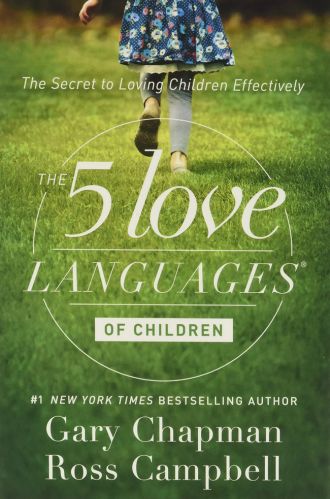Parents, we all know that understanding and communicating with our children can sometimes feel like deciphering an enigmatic code. But what if there were a Rosetta Stone for parenting? Enter our review of the 5 Love Languages of Children, a book that provides the tools to unlock the secret to effectively loving and connecting with our kids.
With overwhelmingly positive reviews, Gary Chapman and Ross Campbell’s insightful guide has resonated with countless parents. But does it live up to the hype? Let’s find out in this extensive and practically-minded book review!
Explore this title among our best books for attachment parenting.
Table of Contents
Introduction
The concept of love languages, first introduced by Gary Chapman in his bestselling book The 5 Love Languages, has taken the world by storm.
With millions of copies sold and countless transformed relationships, it’s no wonder that Chapman and child psychiatrist Ross Campbell decided to apply these principles to parent-child relationships.
Their book, The 5 Love Languages of Children: The Secret to Loving Children Effectively, offers practical strategies and insights for parents looking to understand better and connect with their children on a deeper level.

The reviews for this book are overwhelmingly positive, as many readers have found it to be a helpful, easy-to-understand, and insightful guide.
Its focus on understanding and applying the five love languages in the context of parenting has been praised for providing practical tips and examples, helping parents better understand their children’s needs and improving communication within their families.
Pros and Cons
Before we dive into the book’s nitty-gritty, let’s look at some of the pros and cons that readers have pointed out in their reviews.
Pros:
- Practical framework: The book offers a practical framework for understanding your child’s emotional needs, helping you better connect and communicate with them.
- Specific strategies: Chapman and Campbell provide specific strategies and examples for each love language, making it easy for parents to implement the concepts in their daily lives.
- Accessible language: The book is written in a straightforward, easy-to-understand language, making it accessible to a wide range of readers.
- Individualized parenting approach: The focus on individual love languages encourages parents to tailor their parenting approach to each child’s unique needs and preferences.
Cons:
- Repetitive content: Some readers who have already read the original 5 Love Languages book found the content to be repetitive. However, this may not be an issue for those who are new to the concept.
- Religious references: A few readers found the occasional references to religion off-putting. However, this does not detract from the overall message and practicality of the book.
Despite these cons, the general consensus among readers is that The 5 Love Languages of Children is a valuable resource for parents seeking to understand better and connect with their children. So, let’s dive deeper into the book and explore its strategies, practical advice, and more!
The 5 Love Languages of Children Overview and Key Concepts
The 5 Love Languages of Children adapts the well-known love languages—physical touch, words of affirmation, quality time, gifts, and acts of service—to children’s unique needs and experiences.
Chapman and Campbell believe that each child has a primary love language, which is the most effective way to receive and understand love.
By identifying and speaking your child’s primary love language, you can create a stronger emotional bond and foster their emotional well-being. In the book, they emphasize the importance of unconditional love, stating, “Unconditional love is a full love that accepts and affirms a child for who he is, not for what he does. No matter what he does (or does not do), the parent still loves him.”
This powerful message highlights the crucial role of love languages in nurturing a deep and lasting connection between parent and child.
The book dives deep into each love language, providing examples and strategies for implementing them in your daily interactions with your child. It also addresses the importance of secondary love languages and offers guidance on how to balance multiple children’s love languages within a family.
Strategies and Practical Advice
Chapman and Campbell offer a wealth of practical advice for parents who want to understand better and speak their child’s love language. Here are some strategies and tips for each love language that can be easily implemented in daily life:
- Physical Touch: Physical touch is crucial for a child’s emotional well-being. Parents can incorporate this love language by offering hugs, holding hands, or engaging in physical activities like wrestling or tickling. Be sensitive to your child’s preferences and respect their personal boundaries.
- Words of Affirmation: Use kind, supportive words to affirm your child’s accomplishments, efforts, and feelings. Compliment them when they do something well, express gratitude for their help, and offer encouragement during challenging times. Be genuine and specific with your praise.
- Quality Time: Dedicate time to engage in activities your child enjoys, with your full attention and presence. This could involve playing games, reading together, or simply having a conversation. Create special rituals or traditions that you and your child can look forward to.
- Gifts: Thoughtful gifts can be a powerful way to express love, but remember that the thought behind the gift matters most. Choose gifts that align with your child’s interests and preferences, and consider incorporating handmade or personalized items.
- Acts of Service: Show your love through actions that help your child feel supported and cared for. This could involve helping with homework, preparing their favorite meal, or fixing a broken toy. Be proactive and look for opportunities to serve your child.

In addition to these strategies, the book guides on identifying your child’s primary love language through observation and experimentation.
Simple actions, such as using eye contact correctly are covered. The authors use a concept of “Positive Eye Contact Quality time should include loving eye contact. Looking in your child’s eyes with care is a powerful way to convey love from your heart to the heart of your child.”
By closely examining their reactions and preferences, you can better understand which love language resonates most with your child and make sure that your child feels loved. The ultimate goal lies in building a love that lasts.
Criticisms and Omissions
Despite its many strengths, The Five Love Languages of Children has a few potential shortcomings. Some readers have noted the need for more research on the concept of love languages, as well as limitations in the scope of the book.
For example, the book focuses primarily on younger children and may not address the unique needs of teenagers or young adults. Additionally, the book’s cultural context may not apply to all families and situations.
Other readers have mentioned that certain topics could have been included or expanded upon, such as the role of temperament in a child’s love language preferences or the influence of sibling relationships on love language dynamics within a family.
Ultimately, this book is less about strategies and tricks to bring up your child, more about building a strong love connection. If you are open to this concept, then it will resonate well with you.
Who Should Read The 5 Love Languages of Children
The 5 Love Languages of Children is an excellent resource for parents, caregivers, and educators who want to understand better and support their children’s emotional needs.
Identifying and speaking your child’s love language can foster a stronger emotional bond and help them feel more secure, understood, and loved.
The book can be particularly helpful for parents of children with diverse emotional needs or those facing specific challenges, such as anxiety or trauma.
Understanding your child’s love language can create a more supportive environment that promotes emotional well-being, resilience, and love.
Conclusion
The 5 Love Languages of Children: The Secret to Loving Children Effectively by Gary Chapman and Ross Campbell is a valuable resource for anyone looking to strengthen their connection with their child. Its practical strategies and insights make it an accessible and enjoyable read.
Understanding and speaking your child’s love language can foster a nurturing, supportive environment that promotes their emotional well-being and growth and ensures your child receives love the way they need it.
Related Book Reviews:
Review of No Drama Discipline by Daniel Siegel and Tina Payne Bryson

